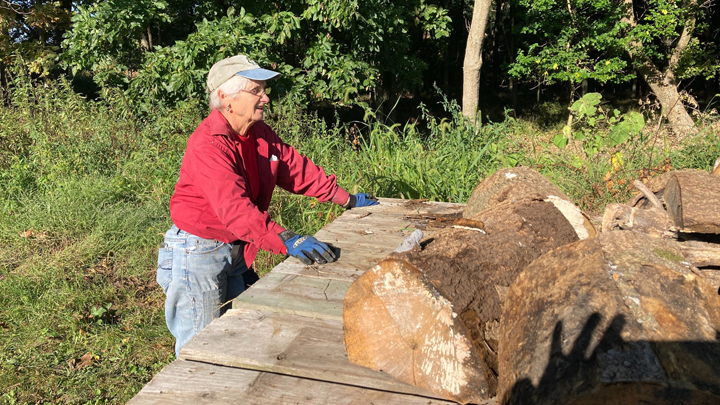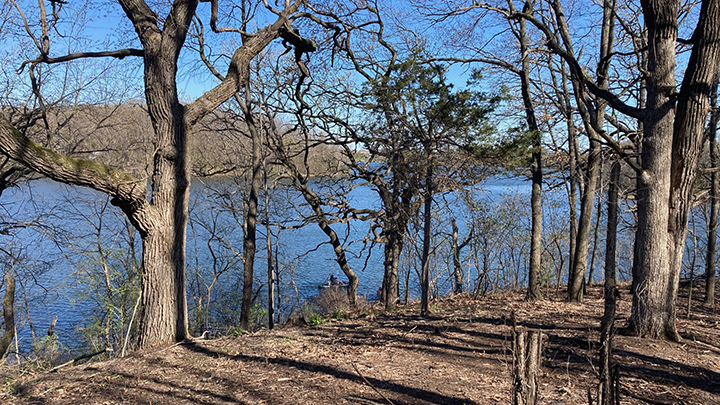Conservation Integrated with Agriculture
Conservation efforts at Silverwood Park are an integral part of the regenerative agricultural practices and land stewardship to which the Friends of Silverwood Park are committed.
Volunteers from both the Dane County Parks system and Friends of Silverwood Park work together throughout the seasons to develop a landscape that provides diversity of habitat across the park. A key element of the conservation work is restoration of the wooded portions of the landscape. The goal is a range of biodiverse natural communities include oak opening/savanna, oak woodland, and oak forest.
Where invasive species have been removed, kettles left behind by the receding glacier are already clearly visible. With restoration of healthy natural ecosystem, the opportunities multiply for hands-on education about nature and its cycles and the outdoor recreation so essential for physical, mental, and emotional health.
Conservation work goes on all year
Rita Fox is the Volunteer Woods Restoration Manager with Friends of Silverwood Park, directed by Dane County staff. Volunteers are welcome any time of year.
From January to March, volunteers remove invasive brush and prepare fire breaks. Volunteer crews from Dane County, trained to operate chainsaws and conduct prescribed burns, lend a hand.
From April to mid-June, we focus on preventing invasive species like garlic mustard, leafy spurge, and canary grass from spreading their seeds, by removing what we can and treating with herbicides where necessary.
Throughout the summer months we mow weeds and continue routine treatment and removal of invasives.
From September to early spring, we return to cutting and stacking invasive brush for removal. When the ground is frozen, crews are able to work near the oaks without damaging them, so removal of undesirable tree species is done then. When snow depth reaches an inch, trained volunteers can burn the brush piles.

Oak savanna restoration underway
Dane County Parks and the Friends of Silverwood Park have partnered in restoration of the oak savanna, which will provide habitat for bees, butterflies, birds and other wildlife. (Read about our savanna restoration and pollinator habitat on our blog.)
Once invasive species of trees, shrubs, and plants are removed, sunlight can penetrate the canopy and the oaks, some of which have become unhealthy from overcrowding by invasive trees, will again be the keystone of the ecosystem. The intermingling of prairie and oak stands will more closely resemble the original landscape before farming was introduced by European settlers.

Forest near the second scenic overlook, shortly after a burn, April 2021
The two-acre portion of the woodland with the ten stations of the Nature Trail will remain wooded, as will the northern portion of the forest that extends to the east from Rice Lake to Silver Lane.
The woods trails have been designed to follow ridges, to prevent erosion while providing for hiking/walking and horseback riding. Other trails that cross steeper sections allow access to scenic overlooks, but are not suitable for horseback riding due to the greater likelihood of erosion. All woods trails are cleared to a minimum of 12’ wide.
Click here to see a map of the planned natural community types.
Welcome to Silverwood Park
Park Hours: 5:00 a.m. – 10:00 p.m.
Silverwood News
- Candlelight Hike Jan 25th January 14, 2025
- Candlelight Hike Postponed January 14, 2025
- Candlelight Hike Postponed January 14, 2025
- Grower Profile: LuckySpud July 15, 2024
- Mushroom Inoculation Workshop April 8, 2024

